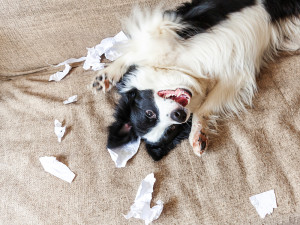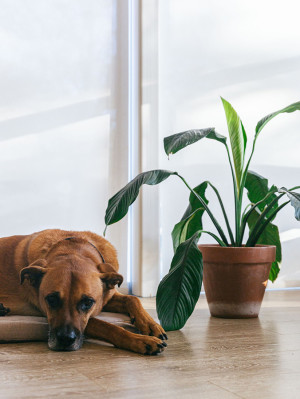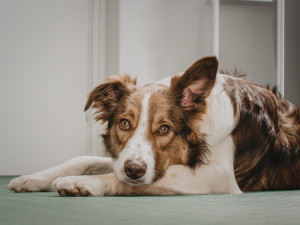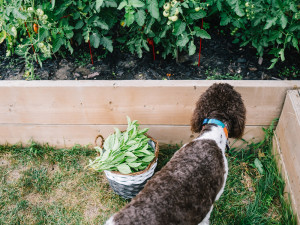7 Ways to Stop Your Dog From Scavenging On Walks
If your dog tries to wolf down literally everything in sight, you need this advice
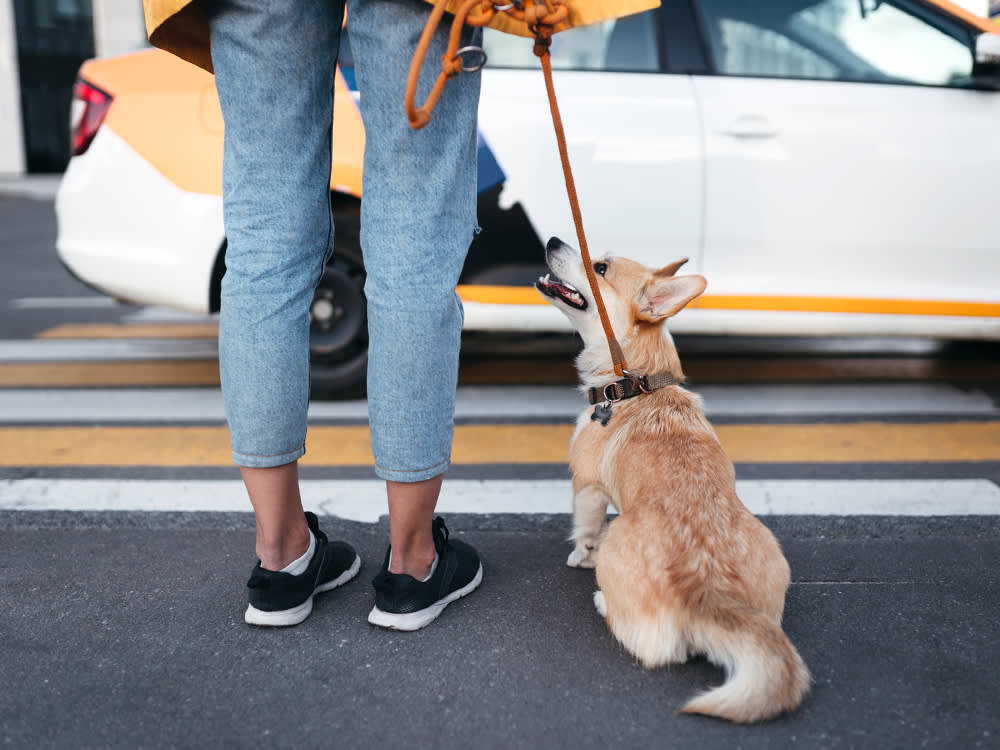
share article
Dogs are scavengers – there’s no pretending otherwise. And some dogs embrace their scavenger nature more than others. If your dog seeks out food (and even things that are most definitely not food) on walks and gobbles it down, you know how scary that can be.
Eating unknown items is dangerous, and if the item they swallow is toxic or causes an intestinal blockage, that can mean an expensive vet visit – which is why it is essential to have some answers to the question, “How do I get my dog to stop eating everything?”
You can’t stop people from littering and you can’t control nature, so fast-food wrappers, chicken bones, toxic nuts, dead birds, rotting sticks, and barely buried cat poo will always be around. What you can do is protect your dog from the dangers of gulping down the stuff they find.
If your dog is prone to scavenging, protecting them from trouble is a difficult but worthy challenge. Here are some ways to do it.
How to stop a dog from eating everything
1. Teach your dog such a good ‘leave it’ that it works every time
‘Leave it’ tells your dog that they’re not allowed to take a particular item – but you must ‘proof the cue’ (aka, get your dog to respond to a cue in all situations) until they’ve mastered it. You’re probably thinking, ‘I’ve already tried to teach my dog to do this. It just doesn’t work a lot of the time, especially when they find something extra-special.’ I do know how hard it is to successfully teach a dog they can’t have something that’s right under their nose just because you say so.
That’s where ‘proofing the cue’ comes in. Teaching a dog to do something is one part of dog trainingopens in a new tab, but most of the effort is about getting them to do it regardless of what else is going on – in other words, helping them succeed no matter how distracting the environment and how enticing the treasure. Working with a trainer will make it far more likely that you can successfully proof your dog’s ‘leave it’, so you can use it when it really matters.
2. Reward your dog for paying attention
When you’re out on walksopens in a new tab, in the garden, or anywhere your dog may be distracted by things to eat, make it worth their while to check in with you. When your dog looks at you, give them something amazing, such as a chunk of real chicken, a small piece of steak, or a bone to chew. In a world filled with interesting things to smell and eat, you have to offer items good enough to compete.
If your dog learns that you have special treats that only appear when you are in the great outdoors, they’ll be more likely to pay attention to you. They will also be more likely to respond when you say their name or ask them to ‘watch’. When you can reliably ask for and get your dog’s attention, you can do so preventively when you see something that may tempt them, thereby avoiding the problem altogether.
3. Walk in areas with fewer temptations
Every place you walk your dogs may have objects that you don’t want them to inhale, but some spots are worse than others. Choose places that offer the fewest temptations in the way of rubbish and other dangers. If your walks include lesser-travelled roads, one option is to walk in the road to avoid surprises hiding in hedges or on people’s lawns.
4. Make eating an adventure for the mind
Dogs who eat everything they come across often find searching for food and eating it to be the most exciting part of life. If you provide them with opportunities to indulge their drive to seek and consume, it helps take the edge off their desperate need to do so on walks. It won’t stop this behaviour, but finding other outlets for it helps lessen the intensity, making it more likely that you can divert their attention with the techniques discussed above.
For example, feed your dog by scattering their dry food over a wide area. If you devote half of the kitchen to your dog’s dinner, they have to search for each piece, and that allows them to use their brain and nose at every meal. It also keeps them from eating their dinner in just a few seconds. You could also try making a snuffle mat, a homemade toy that lets dogs sniff out treats.
5. Do some nose work with your dog
Teach them to use their nose in games. Two of the easiest are ‘find it’, where you ask your dog to stay and then hide a treatopens in a new tab (or treats) they have to find, and ‘which hand’, which allows them to choose the hand that holds a treat by nudging it gently. If they choose correctly, they receive the treat.
6. Slow down your dog’s eating with a special bowl designed for this purpose
Many slow feed bowls have protrusions that dogs must work around to access their food. This slows them down and requires them to work harder to eat, which provides them with mental stimulation and the ability to make eating slowly a habit.
7. In extreme cases where health is at risk, consider using a muzzle
Sometimes people stop walking their dogs because of the risk that their dog will gobble up something truly dangerous. While that’s better than a medical emergency, not walking your dog can compromise their quality of life. Another (potentially better) option is to physically prevent your dog from being able to ingest these dangers.
One barrier is a muzzle. Many people are reluctant to use one because they worry others will think their dog is aggressive, but I wish all the shame and embarrassment associated with muzzles would disappear from our world. Using a muzzle can improve the quality of your walks, allowing your dog to safely sniff and roll and play and enjoy themselves. It’s important that the muzzle doesn’t interfere with your dog’s ability to pant to cool themselves off, so choose a basket muzzle rather than a cloth one.
Dogs who love to eat things off the ground are certainly in danger of hurting themselves (and your budget). But dogs who inhale the world in a second often have a zest for life, and know how to make the most of it. So, while we may not want to follow their lead on what to consume, many of them set a great example of how to “suck out all the marrow of life”, as Thoreau so famously wrote.

Karen B. London, PhD, CAAB, CPDT-KA
Karen B. London, Ph.D., is a Certified Applied Animal Behaviorist and Certified Professional Dog Trainer who specializes in working with dogs with serious behavioral issues, including aggression, and has also trained other animals including cats, birds, snakes, and insects. She writes the animal column for the Arizona Daily Sun and is an Adjunct Professor in the Department of Biological Sciences at Northern Arizona University. She is the author of six books about training and behavior, including her most recent, Treat Everyone Like a Dog: How a Dog Trainer’s World View Can Improve Your Lifeopens in a new tab.
Related articles
- opens in a new tab
Are Peace Lilies Toxic to Dogs?
Keep your pup far away from the toxic plant
![A dog laying on the floor]() opens in a new tab
opens in a new tabWhat to Do If Your Dog Eats Gorilla Glue
The goo in that green-and-orange bottle can cause serious harm – get your dog to the vet ASAP
![Dog near a vegetable garden next to a basket full of a harvest]() opens in a new tab
opens in a new tabTips on Dog-Safe Gardening
Garden organically, for the sake of both the planet and your dogs

